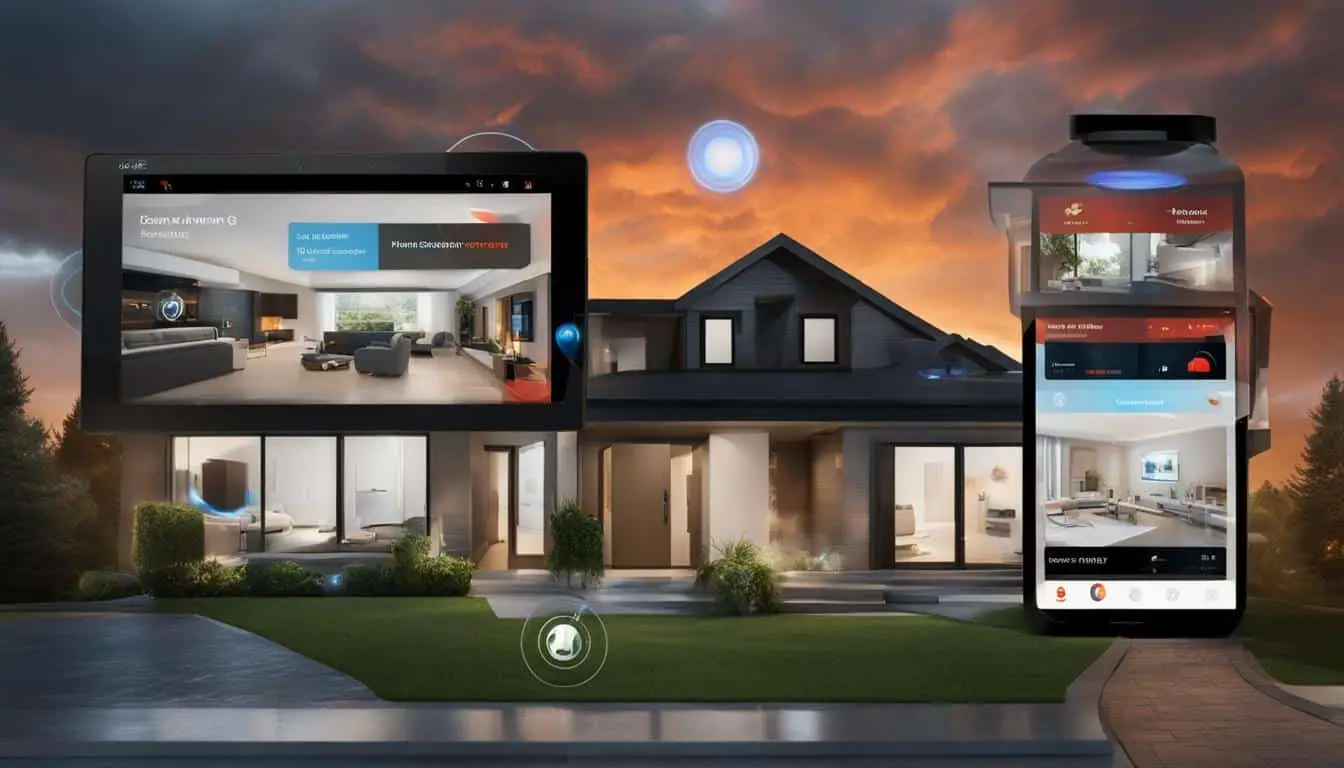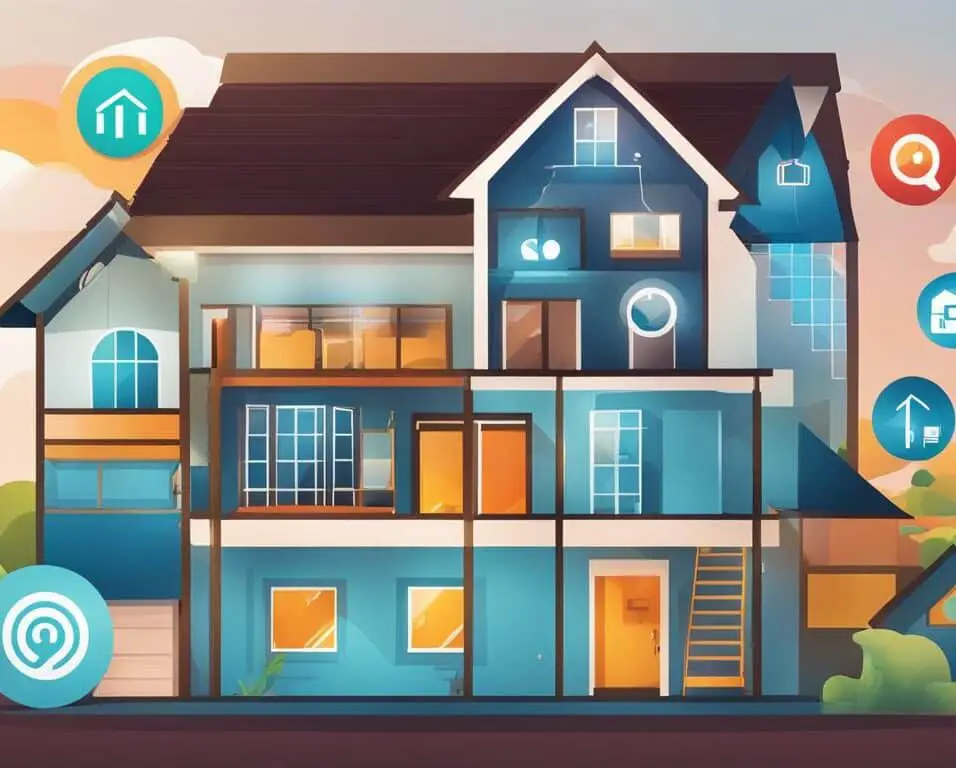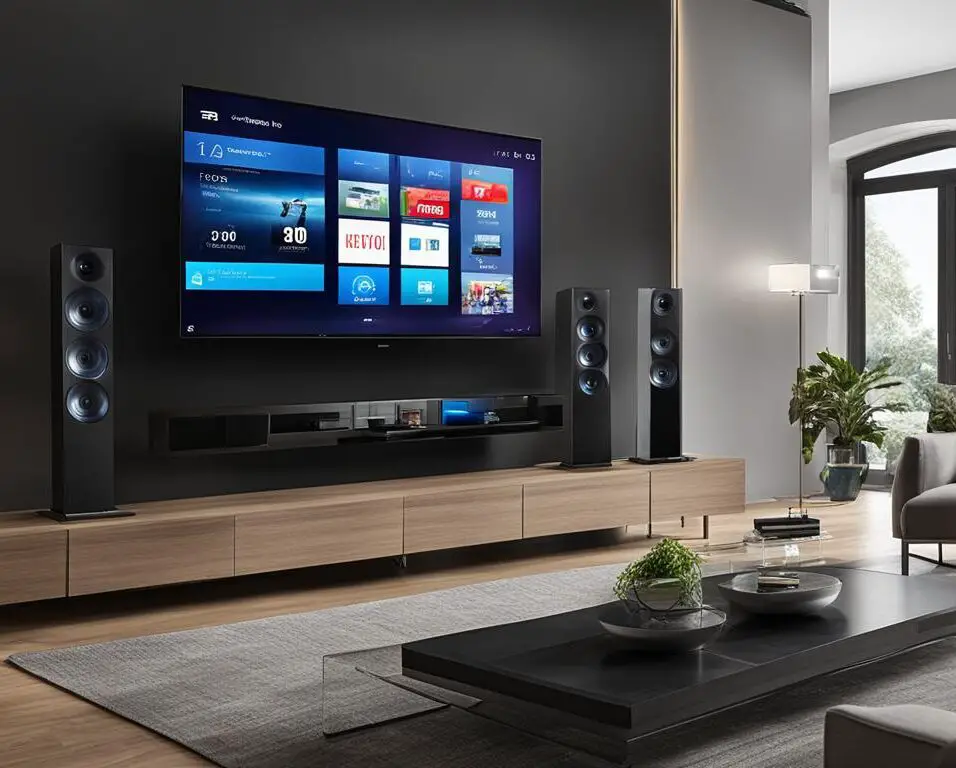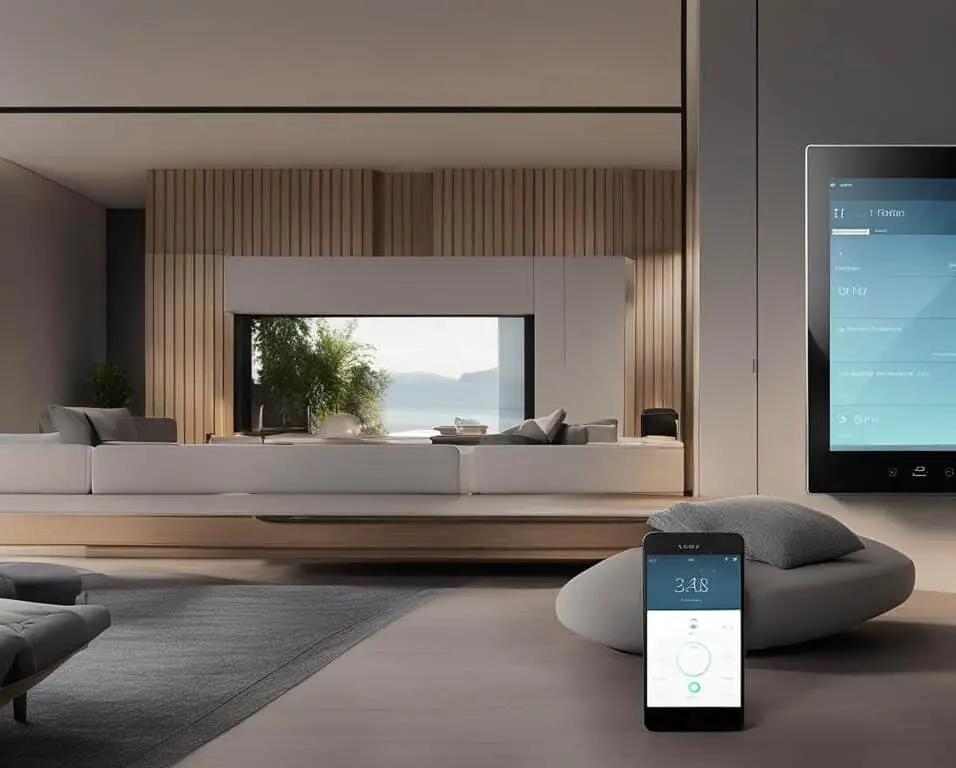The Role of Smart Homes in Emergency Situations
Smart homes equipped with advanced technology play a crucial role in emergency situations by providing safety and comfort to individuals. With the capability of delivering remote healthcare and continuous monitoring, smart homes can be a vital tool in emergency management.
Telemedicine, which involves the use of telecommunication and information processing technologies, enables healthcare professionals to remotely provide healthcare services to patients in their homes. This is especially beneficial for the elderly and physically challenged individuals who may find it challenging to visit healthcare facilities.
Smart home environments utilize sensors, communication networks, and smart devices to facilitate telemedicine and emergency management. These technologies enable the monitoring of vital signs and activities, fall detection, medication management, and the provision of immediate assistance in emergency situations. By leveraging smart home technology, individuals can receive prompt medical intervention, reduce the risk of injuries, and improve overall healthcare outcomes.
Key Takeaways:
- Smart homes equipped with advanced technology play a crucial role in emergency situations.
- Telemedicine enables remote healthcare services for individuals in their homes.
- Smart home environments facilitate vital sign monitoring, fall detection, and medication management.
- Smart homes help individuals receive prompt medical intervention and reduce the risk of injuries.
- By leveraging smart home technology, overall healthcare outcomes can be improved.
Enabling Technologies for Smart Home Telemedicine Environment
Smart home telemedicine environments rely on various enabling technologies to deliver effective telemedicine services. These technologies include smart communication systems, sensors, and sensor networks, which form the backbone of smart home healthcare systems.
Communication systems, such as mobile and wireless technologies, are extensively utilized in telemedicine for seamless delivery of quality healthcare services to patients in their homes. These systems enable the transmission of vital signs data, allowing healthcare providers to remotely monitor patients’ health conditions and provide timely interventions.
Sensors and sensor networks play a crucial role in smart home telemedicine environments by capturing and transmitting essential data. These sensors can monitor vital signs, activities, and environmental conditions, contributing to early detection of health risks and emergency situations. Through the integration of smart devices, communication networks, and sensor networks, smart homes are capable of delivering efficient telemedicine services and facilitating remote healthcare monitoring.
| Enabling Technologies | Applications |
|---|---|
| Mobile and wireless communication technologies | Transmission of vital signs data to healthcare providers |
| Geographic information systems (GIS) technology | Identification of optimal clinic locations for telemedicine services |
| Web-based platforms and voice over IP (VoIP) technologies | Real-time reporting and communication in smart home environments |
| Standard protocols (Zigbee, UPnP) | Seamless integration of sensors, actuators, and communication systems |
“Smart home telemedicine environments require the integration of advanced communication systems, sensors, and networks to enable efficient remote healthcare delivery.”
Advancements in Telemedicine Technology
- Mobile and wireless communication technologies enable seamless transmission of vital signs data, ensuring real-time monitoring and intervention.
- Geographic information systems (GIS) technology aids in locating the most suitable clinics for telemedicine services.
- Web-based platforms and voice over IP (VoIP) technologies facilitate real-time reporting and effective communication.
- Standard protocols like Zigbee and UPnP enable the seamless integration of diverse smart home devices and systems.
The integration of these enabling technologies forms a robust smart home telemedicine environment, empowering individuals to receive quality healthcare services from the comfort of their homes, promoting independence and improving overall healthcare outcomes.

Benefits of Smart Home Monitoring in Emergency Situations
Smart home monitoring offers numerous benefits in emergency situations. By remotely monitoring vital signs such as heart rate, blood pressure, and oxygen levels, healthcare providers can detect health risks promptly and provide timely interventions, leading to improved patient outcomes.
Smart home monitoring systems equipped with motion sensors and cameras can prevent falls by detecting unusual movements and alerting healthcare providers. This quick response and intervention reduce the risk of injuries and potentially life-threatening situations.
Smart home monitoring also simplifies medication management through connected pill dispensers and reminders, ensuring patients take their medications on time and reducing the risk of errors.
Additionally, smart home monitoring systems provide peace of mind and promote independence by incorporating voice-controlled virtual assistants and enabling remote monitoring of patients’ well-being. This technology also enhances healthcare efficiency by reducing hospital readmissions and emergency room visits, as well as enabling data-driven interventions and personalized care plans.
| Benefits of Smart Home Monitoring | Key Points |
|---|---|
| Improved Patient Outcomes | Remote monitoring of vital signs allows for timely interventions |
| Fall Prevention | Motion sensors and cameras detect unusual movements to prevent falls |
| Medication Management | Connected pill dispensers and reminders reduce the risk of errors |
| Peace of Mind and Independence | Voice-controlled virtual assistants and remote monitoring enhance well-being |
| Healthcare Efficiency | Reduces hospital readmissions and emergency room visits |
Conclusion
Smart home technology has revolutionized remote care in emergency situations, providing safety, comfort, and efficient healthcare services. By leveraging advanced technologies such as telemedicine, sensors, and communication systems, smart homes enable the remote monitoring of vital signs, fall prevention, and medication management. These capabilities lead to improved patient outcomes, reduced healthcare costs, and increased healthcare efficiency.
Smart homes promote independence and peace of mind among individuals requiring care, while also empowering patients to actively participate in their own healthcare. With the ability to remotely monitor vital signs and promptly detect health risks, healthcare providers can deliver timely interventions, leading to improved patient outcomes. Additionally, smart home monitoring systems equipped with motion sensors and cameras play a crucial role in preventing falls and reducing the risk of injuries.
Furthermore, smart home monitoring simplifies medication management by incorporating connected pill dispensers and reminders. This ensures patients take their medications on time, reducing the risk of errors and improving overall medication adherence. By providing peace of mind and incorporating voice-controlled virtual assistants, smart home technology enhances the well-being of individuals requiring care, promoting independence and a sense of security.
As technology continues to advance, the potential of smart homes in emergency situations will only grow, leading to a future of personalized and efficient healthcare delivery. With their ability to remotely monitor patients’ well-being, smart homes contribute to healthcare efficiency by reducing hospital readmissions and emergency room visits. By enabling data-driven interventions and personalized care plans, smart home technology empowers patients and healthcare providers to work together towards achieving optimal health outcomes.
FAQ
How do smart homes contribute to emergency situations?
Smart homes equipped with advanced technology play a crucial role in emergency situations by providing safety and comfort to individuals. They offer remote healthcare and continuous monitoring, which can be vital tools in emergency management.
What is telemedicine and how does it relate to smart homes?
Telemedicine involves the use of telecommunication and information processing technologies to remotely provide healthcare services to patients in their homes. Smart home environments utilize sensors, communication networks, and smart devices to facilitate telemedicine and emergency management.
What technologies are used in smart home telemedicine environments?
Smart home telemedicine environments require various enabling technologies, including communication systems, sensors, and sensor networks. Mobile and wireless communication technologies, internet infrastructure, multi-agent systems, and geographic information systems (GIS) technology are commonly used.
What are the benefits of smart home monitoring in emergency situations?
Smart home monitoring allows for remote monitoring of vital signs, fall prevention through motion sensors and cameras, simplified medication management, and peace of mind through voice-controlled virtual assistants. It also enhances healthcare efficiency, reduces hospital readmissions, and enables personalized care plans.
How does smart home technology revolutionize remote care in emergency situations?
By leveraging advanced technologies such as telemedicine, sensors, and communication systems, smart homes enable the remote monitoring of vital signs, fall prevention, and medication management. This leads to improved patient outcomes, reduced healthcare costs, and increased healthcare efficiency.








